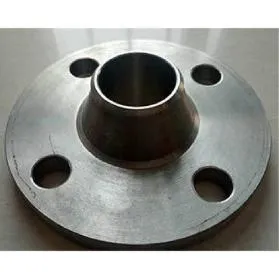-
Cangzhou Yulong Steel Co., Ltd.
-
Phone:
+86 13303177267 -
Email:
admin@ylsteelfittings.com
- English
- Arabic
- Italian
- Spanish
- Portuguese
- German
- kazakh
- Persian
- Greek
- French
- Russian
- Polish
- Thai
- Indonesian
- Vietnamese
- Zulu
- Korean
- Uzbek
- Hindi
- Serbian
- Malay
- Ukrainian
- Gujarati
- Haitian Creole
- hausa
- hawaiian
- Hebrew
- Miao
- Hungarian
- Icelandic
- igbo
- irish
- Japanese
- Javanese
- Kannada
- Khmer
- Rwandese
- Afrikaans
- Albanian
- Amharic
- Armenian
- Azerbaijani
- Basque
- Belarusian
- Bengali
- Bosnian
- Bulgarian
- Catalan
- Cebuano
- China
- China (Taiwan)
- Corsican
- Croatian
- Czech
- Danish
- Esperanto
- Estonian
- Finnish
- Frisian
- Galician
- Georgian
- Kurdish
- Kyrgyz
- Lao
- Latin
- Latvian
- Lithuanian
- Luxembourgish
- Macedonian
- Malgashi
- Malayalam
- Maltese
- Maori
- Marathi
- Mongolian
- Myanmar
- Nepali
- Norwegian
- Norwegian
- Occitan
- Pashto
- Dutch
- Punjabi
- Romanian
- Samoan
- Scottish Gaelic
- Sesotho
- Shona
- Sindhi
- Sinhala
- Slovak
- Slovenian
- Somali
- Sundanese
- Swahili
- Swedish
- Tagalog
- Tajik
- Tamil
- Tatar
- Telugu
- Turkish
- Turkmen
- Urdu
- Uighur
- Welsh
- Bantu
- Yiddish
- Yoruba

Nov . 24, 2024 00:25 Back to list
Understanding A333 Grade Pipe Specifications for Various Applications and Industries
Understanding A333 The ASTM Specification for Low-Temperature Service Pipe
When it comes to the construction and manufacturing of pipelines, particularly in industries such as oil and gas, the integrity of the materials used is crucial. One of the significant standards that guide the design and application of materials in low-temperature environments is ASTM A333. This specification provides the framework for a particular class of carbon and alloy steel pipe intended for use in low-temperature service.
What is ASTM A333?
ASTM A333 is a specification developed by ASTM International, which outlines the requirements for seamless and welded steel pipes designed for low-temperature service. It includes several grades of steel, providing options for various applications depending on the operational temperature and environmental conditions. Specifically, ASTM A333 covers grades 1 through 11, with different mechanical properties suited for each grade.
The primary purpose of this specification is to ensure that the materials can withstand the challenges posed by low-temperature environments, such as brittle fracture. Brittle fracture can occur in steel subjected to low temperatures, where the material fails suddenly and without prior plastic deformation. Therefore, materials conforming to ASTM A333 must demonstrate adequate toughness and ductility to prevent such failures.
Grades and Mechanical Properties
The different grades of ASTM A333 are classified based on their chemical composition and mechanical properties. For example
- Grade 1 This is a low-strength pipe that is often used for applications where lower pressure ratings are acceptable. - Grade 3 Designed for better toughness than Grade 1, suitable for more demanding applications. - Grade 6 Offers improved strength and is often used in colder climates. - Grades 8, 9, 10, and 11 These higher grades incorporate alloying elements such as nickel and chromium, enhancing low-temperature performance and toughness.
a333 astm

Each grade has specific yield strength, tensile strength, and elongation requirements, ensuring that the pipe will perform adequately in its intended application.
Applications of ASTM A333
Due to its design for low-temperature service, ASTM A333 pipes are commonly used in various critical applications, including
1. Cryogenic Facilities Operations involving liquefied natural gas (LNG) and other cryogenic fluids require materials that can handle extreme temperatures without losing integrity. 2. Petrochemical Industries Pipes transporting petroleum products at low temperatures are often manufactured according to ASTM A333 standards to ensure safety and reliability. 3. Water Supply Systems In colder climates, where water pipelines are at risk of freezing, ASTM A333 pipes provide a durable and reliable solution.
Importance of Compliance
Adhering to ASTM A333 specifications is not merely a regulatory formality but a safety imperative. Failure to use compliant materials can lead to catastrophic failures, resulting in unsafe working conditions, environmental damage, and substantial financial losses. Suppliers and manufacturers must ensure that the materials meet the required standards through rigorous testing and certification processes.
Conclusion
In conclusion, ASTM A333 plays a vital role in the safety and efficiency of pipeline systems operating in low-temperature environments. Understanding the specifications and grades allows engineers and manufacturers to select appropriate materials that ensure structural integrity and performance. As industries continue to innovate and expand, the relevance of ASTM A333 will endure, highlighting the need for quality materials that can withstand the rigors of extreme conditions. By maintaining rigorous standards and compliance with ASTM specifications, industries can enhance not only safety but also operational efficiency in their projects.
Latest news
-
ANSI 150P SS304 SO FLANGE
NewsFeb.14,2025
-
ASTM A333GR6 STEEL PIPE
NewsJan.20,2025
-
ANSI B16.5 WELDING NECK FLANGE
NewsJan.15,2026
-
ANSI B16.5 SLIP-ON FLANGE
NewsApr.19,2024
-
SABS 1123 FLANGE
NewsJan.15,2025
-
DIN86044 PLATE FLANGE
NewsApr.19,2024
-
DIN2527 BLIND FLANGE
NewsApr.12,2024
-
JIS B2311 Butt-Welding Fittings LR/SR 45°/90° /180°Seamless/Weld
NewsApr.23,2024











